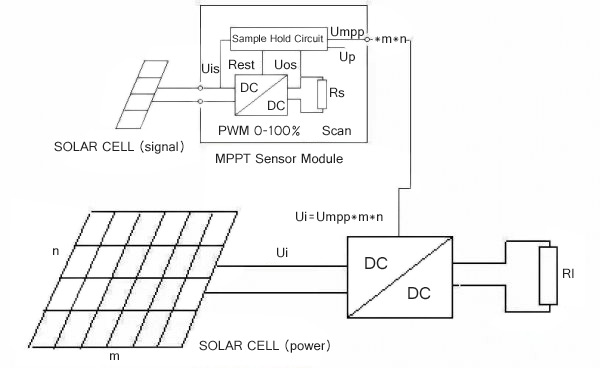The solar MPPT charge controller can detect the power generation voltage of the solar panel on a real-time basis, and track the maximum voltage current value (VI) so that the system can charge the accumulator with the maximum power output. If applied to the solar photovoltaic system, it can help adjust the solar cell, accumulator, and load. This has gained it the name of the "brain" of the photovoltaic system.
What is photovoltaic MPPT?
The photovoltaic solar inverter is a central component of the photovoltaic power generation system, and the MPPT technology is a core technology of the photovoltaic inverter. Then, what is the photovoltaic MPPT?
The Maximum Power Point Tracking (MPPT) system is an electric system that can ensure the photovoltaic panel to output more electricity by adjusting the electric module’s working status. It can effectively store the DC emitted by the solar cell panel in the accumulator to effectively resolve the problem with the conventional grid that the domestic and industrial power use in remote areas and tourist destinations is not satisfied while avoiding causing environmental pollution.
Role of MPPT
The role of MPPT can be boiled down as below: The output power of the photovoltaic cell is linked to the working voltage of the MPPT solar charge controller. Only when working under the most suitable voltage will MPPT achieve the exclusive maximum value for its output power.
Since the solar cell is subject to the influence of external factors, including light intensity and environment, the output power is ever-changing, and more electricity will be generated by the light intensity. The inverter with the MPPT makes full use of solar cells, ensuring them to operate at the MPP. In other words, when the solar radiation remains unchanged, the output power after the introduction of MPPT is higher than that before the introduction of MPPT.

Principle of MPPT
The working principle of Maximum Power Point Tracking (MPPT) in solar charge controllers revolves around continuously finding and maintaining the optimal operating point of the solar panels to maximize their power output. Here’s a detailed breakdown of the working principle.
MPPT control is generally accomplished by the DC/DC inverter. The photovoltaic battery array and load are connected via the DC/DC circuit. The MPPT can constantly detect the current and voltage changes of the photovoltaic array and adjust the duty cycle of the PWM-driven signals of the DC/DC converter according to these changes.
In the linear circuit, when the load resistance is equal to the internal resistance of the load resistance, the power source will have the maximum power output. Though the photovoltaic cell and the DC/DC switching circuit are strongly nonlinear, they can be regarded as linear circuits within a short period. Therefore, as long as the equivalent resistance of the DC-DC switching circuit can be adjusted to ensure its equivalence to the internal resistance of the photovoltaic cell, the maximum output of the photovoltaic cell can be realized, which is equal to the realization of the photovoltaic cell's MPPT.
Tracking the maximum power point: The MPPT controller’s primary function is to identify and lock onto this MPP. This is achieved through various algorithms and control strategies.
DC-DC converter operation: Voltage Adjustment: The MPPT controller uses a DC-DC converter (either a buck converter, boost converter, or buck-boost converter) to adjust the panel’s voltage to match the battery's voltage requirements.
Current conversion: While adjusting the voltage, the converter ensures that the current is also adjusted to maximize the power transfer to the battery.
Real-Time monitoring and adjustment: Continuous Monitoring: The MPPT controller continuously monitors the voltage and current from the solar panels.
Dynamic adjustment: Based on real-time data, the controller dynamically adjusts the operating point to stay at or near the MPP, adapting to changes in sunlight intensity, shading, and temperature.
To sum up, the MPPT solar charge controller can track the MPP in the solar panel on a real-time basis to give full play to the maximum function of the solar panel. The higher the voltage is, the more the electric power capacity can be output through the MPPT to improve the charging efficiency.
